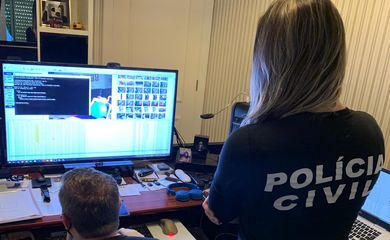Over 6,000 children rescued from child labor in 2 years

Between January 2023 and April 2025, 6,372 children and adolescents were removed from child labor situations across the country by the Brazilian government.

According to a survey by the Ministry of Labor and Employment, 86 percent of the rescued children and adolescents were found in the worst forms of child labor—activities that pose serious occupational hazards and cause significant harm to their health and overall development.
The release of the data is part of the activities marking the Week to Combat Child Labor. The World and National Day Against Child Labor is observed on June 12.
Records
The ministry’s records indicate a rising trend in child labor. In 2023, 2,564 children and adolescents were identified and removed from such situations; in 2024, the number increased to 2,741.
In the first four months of this year, 1,067 children and adolescents were removed from child labor—equivalent to 38.93 percent of the total recorded in all of last year.
Boys accounted for 74 percent of cases, while girls accounted for 26 percent.
A total of 791 children aged 13 and under were identified as involved in child labor.
Among adolescents aged 14 and 15, 1,451 cases were recorded. The highest number of removals occurred in the 16–17 age group, with 4,130 adolescents—most of them engaged in activities classified as the worst forms of child labor or considered harmful to their physical, psychological, moral, and social development.
The main economic activities in which child labor was found during this period include retail trade, the food sector, motor vehicle maintenance and repair, as well as agriculture and livestock farming.
Mobilization to combat child labor
The World Day Against Child Labor was established in 2002 by the International Labor Organization (ILO), coinciding with the release of the first global report on child labor at that year’s International Labor Conference.
Brazil signed the international commitment to eradicate all forms of child labor by 2025, in line with target 8.7 of the Sustainable Development Goals (SDGs) adopted by the United Nations (UN) General Assembly.
This year’s campaign to combat child labor carries the slogan “Every child who works loses their childhood and their future” and aims to encourage society and public authorities to take concrete actions against this illegal practice.
Comprehensive protection
The Ministry of Labor and Employment outlines the measures implemented after identifying children and adolescents engaged in irregular work:
- It ensures their immediate removal from the activity and guarantees their labor rights;
- The Ministry’s Labor Inspectorate issues Terms of Request, which are sent to entities such as guardianship councils, social assistance and education departments, the Labor Prosecutor’s Office, and the State Prosecutor’s Office to prevent children from returning to child labor;
- Young people are included in public policies that guarantee their full protection;
- Adolescents aged 14 and older are enrolled in professional apprenticeship programs that provide training in safe working environments, with guaranteed labor and social security rights;
Legislation
In Brazil, all forms of work are prohibited for children under 14. The minimum legal working age is 16, although teenagers aged 14 and 15 may work as apprentices.
Work performed by individuals under 18 is prohibited if it involves unhealthy or dangerous conditions, night shifts, or activities harmful to their physical, mental, moral, or social development, as well as work conducted at times or locations that prevent school attendance.







